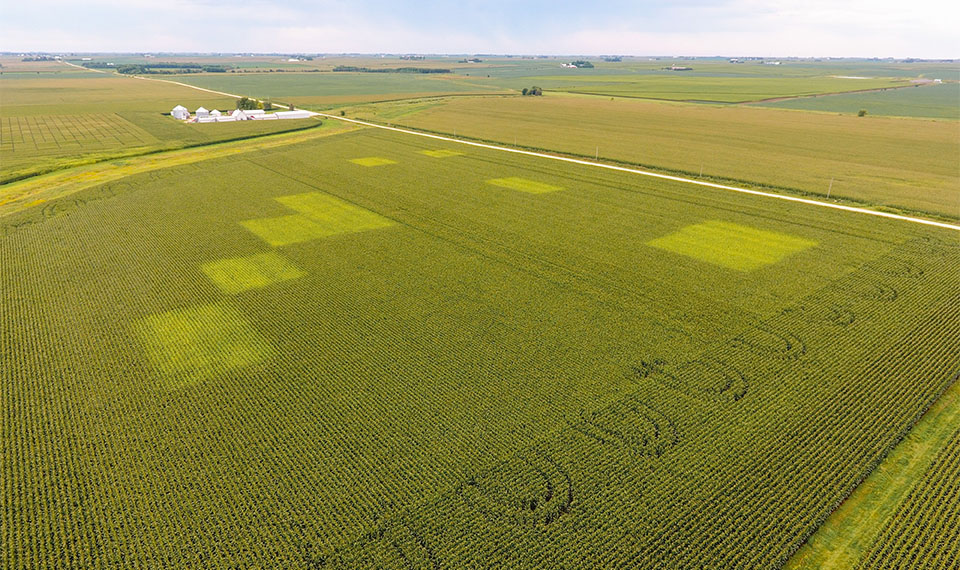
At this Fayette County farm, the lighter-colored portions of the field are where little or no nitrogen was applied. (Photo: Iowa Nitrogen Initiative)
Working on precise nitrogen management
December 1, 2023 | Kriss Nelson
Just what is the official recommendation and ideal rates for nitrogen application? That is the million-dollar, or could you say billion-dollar question?
To help farmers understand where nitrogen is best placed and at the best rate, the Iowa Soybean Association (ISA) is partnering with Iowa State University (ISU) to conduct the Iowa Nitrogen Initiative trial – and now is the time to sign up.
There are no restrictions on management practices. The only requirements are yield maps from previous years, a calibrated yield monitor and access to equipment that can apply nitrogen at variable rates across the field.
Two block trials are placed in a field, and, considering past yield maps, trials will be put in consistently higher and lower-yielding field areas. Five different nitrogen treatments will be within the block, all put on by a prescription.
“It’s an easy trial to participate in provided you have the technology,” says ISA Research Agronomist Alex Schaffer.
ISA will use its network of research and conservation agronomists to help recruit farmers.
“Our goal is to increase recruitment with the Iowa Soybean Association being the single point of contact for the farmer,” says ISA Director of Research Joe McClure. “We will gather their information, partner with Iowa State University for the nitrogen prescription, and deliver the prescription and results back to the farmer.”
About the Iowa Nitrogen Initiative
The goal is to collect hundreds of locations of five-rate nitrogen trials implemented via variable rate technology to improve the Maximum Return to Nitrogen (MRTN) tool and support various crop modeling and predictive models to improve farm profitability and nitrogen use efficiency.
According to ISU, the Iowa Nitrogen Initiative is helping to develop three decision-making tools:
- Updated and more dynamic benchmark recommendations for nitrogen rates will account for differences in genetics, soil, management and weather. Farmers can also see anonymized data from trials to see the real-world outcomes of various rates and practices.
- Forecasting will estimate ideal rates based on current and near-term predictions for soil and weather conditions.
- Hindcasting will help farmers look back at a prior growing year to explore how their crop’s nitrogen needs would have changed if they’d done things differently, from planting a different hybrid to applying at a different time.
“We are not cutting back nitrogen rates, just working on what is best,” says Schaffer. “We want to look at management practices and dial in that rate up or down, whichever way it needs to go to maximize the farmer’s return. An ideal situation to adjust nitrogen rates gives you a direct line to one of your most expensive inputs and your bottom line.”
For more information, email Schaffer at aschaffer@iasoybeans.com or call 815-274-2998.
Back